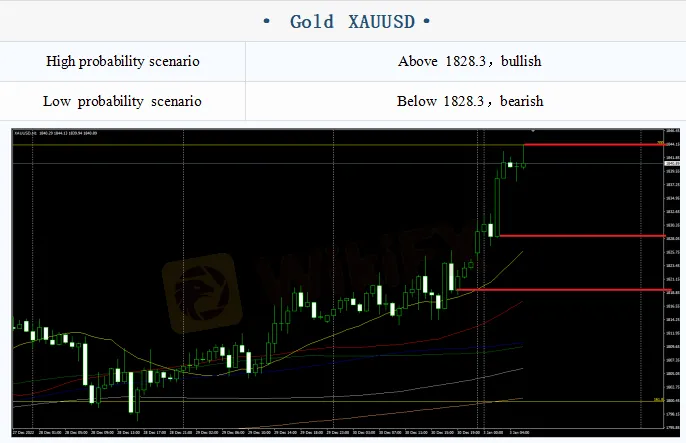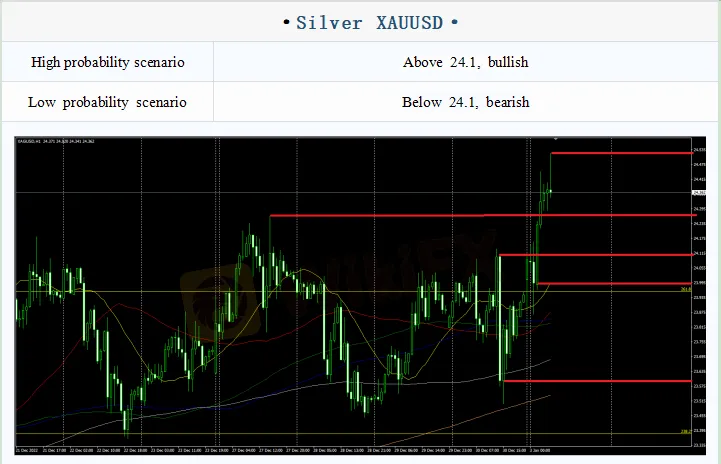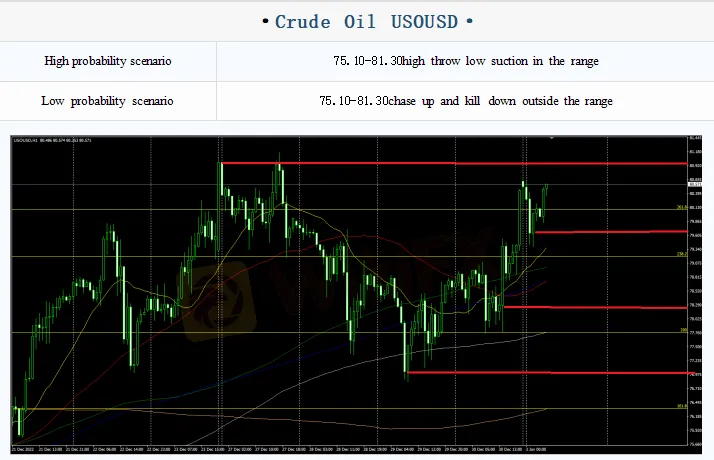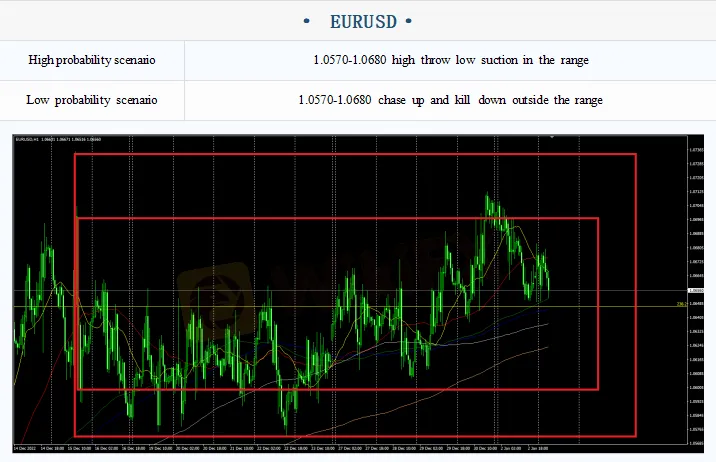Mohicans markets:January 3, 2023 - MHM European Perspective
Abstract:The dollar shook sharply against the yen early in Asian trading on Tuesday, January 3, once hitting a near five-month low near 130.53. The view that the Bank of Japan will change its low interest rate course is being pursued, with the BOJ considering raising its inflation forecast and expecting to move closer to its 2% target in fiscal year 2024, according to Nikkei.

Market Overview
The dollar shook sharply against the yen early in Asian trading on Tuesday, January 3, once hitting a near five-month low near 130.53. The view that the Bank of Japan will change its low interest rate course is being pursued, with the BOJ considering raising its inflation forecast and expecting to move closer to its 2% target in fiscal year 2024, according to Nikkei. However, overall market trading is still somewhat limited due to the New Year's Day holiday on Monday, with the dollar and risk appetite leading the market. Coupled with the strong support for the exchange rate near the 130 mark, some yen bulls took profits as the super week approached, and the dollar pulled up more than 80 points against the yen in the short term to around 131.39, which is currently trading around 130.77.
The dollar index rose 0.22% on Monday to close at 103.73. The dollar index was also volatile on Tuesday, touching a low near 103.59 before quickly pulling up to near 103.89 and now trading near 103.70.
Spot gold shocked higher, once hitting a new high since June 24 to $1844.13 per ounce. Major investment banks expect the U.S. economy to recession, the Federal Reserve policy will gradually turn in 2023. Relative weakness in the dollar index, to provide support for gold prices. International Monetary Fund (IMF) President Georgieva also expressed concern about the global economic outlook, adding to the attractiveness of gold.
U.S. crude oil is trading at $80.47 per barrel; despite Friday's EIA energy report showing a decline in U.S. demand for crude oil and oil products in October 2022; Russia admitted on Monday that dozens of Russian military personnel were killed in an attack, which was one of the deadliest in the war in Ukraine; perhaps increasing geopolitical tensions and boosting oil prices.
This week will see the minutes of the Federal Reserve's December interest rate resolution and also the U.S. non-farm payrolls report for December. At the same time, the U.S. December ISM manufacturing and non-manufacturing PMI data will also be out of, the market impact are very large, investors need to pay attention in advance.
Mohicans Markets strategy is only for reference and not for investment advice. Please carefully read the statement at the end of the text. The following strategy will be updated at 15:00 on January 3, 2023, Beijing time.

Intraday Oscillation Range: 1817-1833-1856
Overall Large Oscillation Range: 1730-1756-1780-1801-1817-1833-1856-1880
Spot gold in the subsequent period, 1817-1833-1856 can be operated as an intraday range of bullish and bearish; high throw low suction in the range, chase up and kill down outside the range!
Note: The above strategy was updated at 15:00 on January 3. This policy is a daytime policy. Please pay attention to the policy release time.

Intraday Oscillation Range: 23.1-23.9-24.5-25.3
Overall Large Oscillation Range: 20.6-21.5-22.3-23.1-23.9-24.5-25.3-26.1Spot silver in the subsequent period, 23.1-23.9-24.5-25.3 can be operated as an intraday range of bullish and bearish; high throw low suction in the range, chase up and kill down outside the range!
Note: The above strategy was updated at 15:00 on January 3. This policy is a daytime policy. Please pay attention to the policy release time.

Intraday Oscillation Range: 75.1-77.3-78.5-79.9-81.3
Overall Large Oscillation Range: 70.1-71.2-72.3-73.1-73.8-75.1-77.3-78.5-79.9-81.3-82.1-83.5
U.S. crude oil in the subsequent period, 75.1-77.3-78.5-79.9-81.3 can be operated as a range of bullish and bearish; high throw low suction in the range, chase up and kill down outside the range!
Note: The above strategy was updated at 15:00 on January 3. This policy is a daytime policy. Please pay attention to the policy release time.

Intraday Oscillation Range: 1.0470-1.0580-1.0690
Overall Large Oscillation Range: 1.0290-1.0360-1.0470-1.0580-1.0690-1.0755
EURUSD in the subsequent period,1.0470-1.0580-1.0690 can be operated as an intraday range of bullish and bearish; high throw low suction in the range, chase up and kill down outside the range!
Note: The above strategy was updated at 15:00 on January 3. This policy is a daytime policy. Please pay attention to the policy release time.

Intraday Oscillation Range: 1.1830-1.1920-1.2030-1.2135
Overall Large Oscillation Range: 1.1610-1.1830-1.1920-1.2030-1.2135-1.2250-1.2400-1.2470
GBPUSD in the subsequent period, 1.1920-1.2085-1.2250-1.2400
1.1920-1.2085-1.2250-1.2400 can be operated as an intraday range of bullish and bearish; high throw low suction in the range, chase up and kill down outside the range!
Note: The above strategy was updated at 15:00 on January 3. This policy is a daytime policy. Please pay attention to the policy release time.

Read more

Mohicans markets:MHM European Market
Spot gold weakened slightly during the Asian session on Thursday (April 6), hitting a two-day low of $2007.89 per ounce and now trading near $2014.15. A series of weak economic data has fueled fears of an impending recession in the US, giving safe-haven support to the dollar. And some dollar shorts took profits, and gold bulls also took profits ahead of Good Friday and the non-farm payrolls data, putting pressure on gold prices.

Mohicans markets:MHM Today News
On Wednesday, as the less-than-expected March "ADP" data and non-manufacturing PMI data fueled market concerns about an economic slowdown and spurred bets that the Federal Reserve could slow interest rate hikes. Spot gold continued to brush a new high since March last year, which was the highest intraday to $2032.13 per ounce, and then retracted most of the day's gains, finally closing up 0.01% at $2020.82 per ounce; spot silver hovered around $25 during the day, finally closing down 0.21% at $2

Mohicans markets:MHM European Market
Spot gold oscillated slightly lower during the Asian session on Tuesday (April 4) and is currently trading around $1980.13 per ounce. The dollar index rebounded mildly after a big drop overnight, putting pressure on gold prices. However, this week will see the non-farm payrolls report, there is no important economic data out on Tuesday, and the market wait-and-see sentiment is getting stronger.

Mohicans markets :MHM Today News
On Monday, in OPEC + members unexpectedly cut production reignited market concerns about long-term inflation and sparked uncertainty about the Fed's response, the dollar index once up to the 103 mark, and then on a "vertical roller coaster", giving back all the gains of the day and once lost 102 mark, finally closed down 0.53% at 102.04; U.S. 10-year Treasury yields rose and then fell, as data showed that the U.S. economy continues to slow, it fell sharply in the U.S. session, and once to a low
WikiFX Broker
Latest News
Lawmakers Push New Crypto ATM Rules to Fight Fraud
2025 WikiFX Forex Rights Protection Day Preview
PH Senator Probes Love Scams Tied to POGOs
Mastering Calm: How to Stay Cool in Forex Trading?
The End of Costly USDT Transfers: Tron Reshapes Stablecoin Transactions
BP\s shareholders want it to make money, not climate policy
2025 SkyLine Guide Thailand Opening Ceremony: Jointly Witnessing New Skyline in a New Chapter
TriumphFX: The Persistent Forex Scam Draining Millions from Malaysians
Safety Alert: FCA Discloses These 11 Unlicensed Financial Websites
Why does Botbro change the domain name?
Rate Calc


